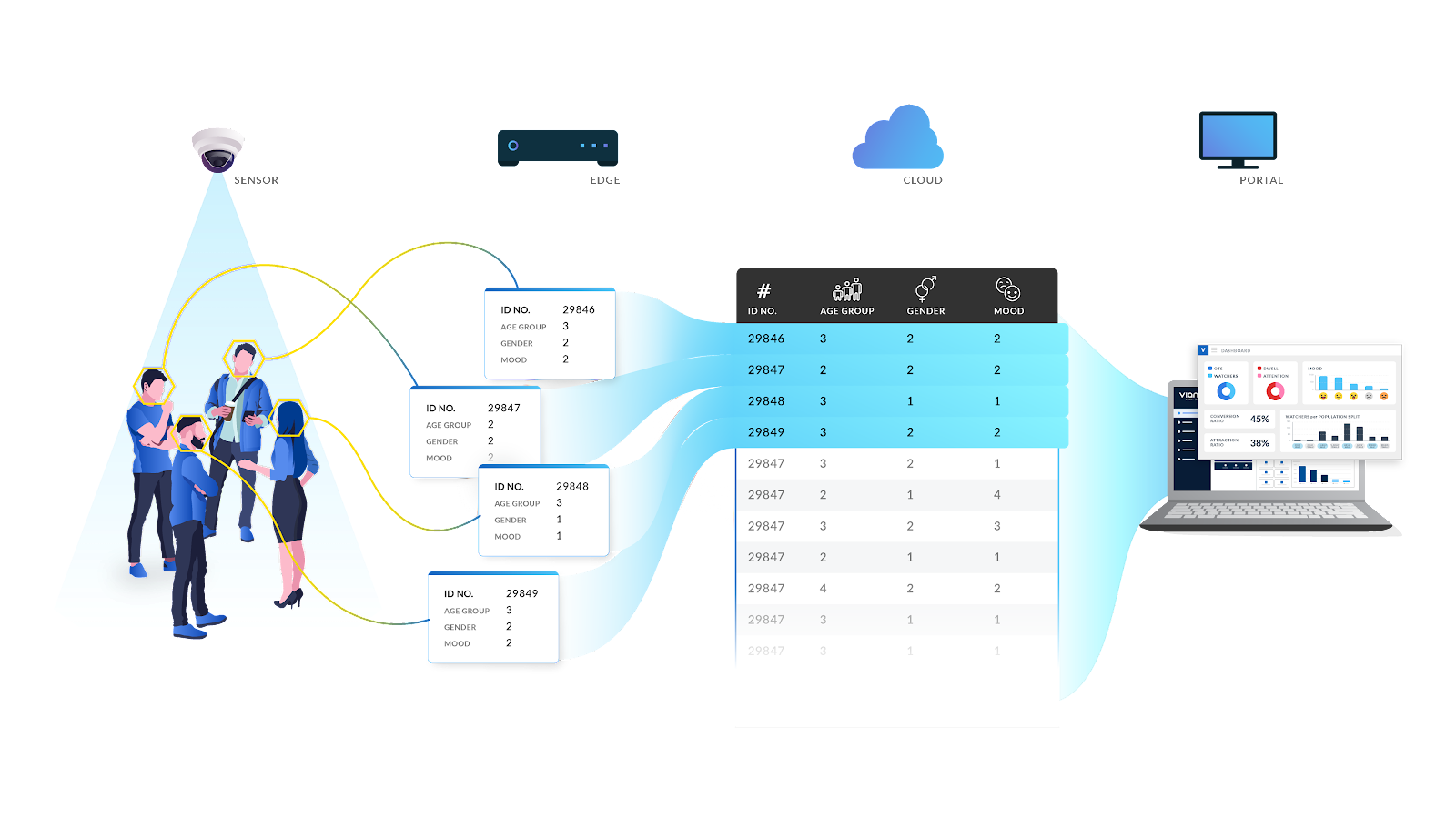Artificial Perception of Human Appearance: Tracking the Pattern, NOT the Person
Interesting things about human behavior.
Moods, patterns, and impressions are gathered as we humans pass each other on the street, in stores and cafes. Using a cafe example, we have trained ourselves to detect and avoid standing in line (as we order our cappuccino) near an overly aggressive customer who is about to reprimand an unsuspecting barista. We could tell by his “cranky pants-face” that he is about to implode.
The same training we used to avoid “Mr. Grumpy” at the cafe also assists us throughout the day in our everyday life as we go for our morning walk and smile and say “hello” to the happy walkers as we pass them on the sidewalk and perceive their mood. As we have evolved, these learned perceptions help us guide our day and avoid adverse situations or conversely, move us towards repeating comfortable ones.
Similarly, the patterns, behaviors, and moods we detect can be learned and taught artificially to machines and analyzed in methods which convert the data from a frowning human face to a score or numerical value.
The difference with us humans and our personal perceptions is that we have a limitation as to our exposures to others in a day, week, or any given situation. We as humans have a tolerance threshold for adverse or even positive human behavior.
Conversely, a machine does not tire of meeting new behaviors and habits, as it does not consider the emotions as an “affecting” behavior (i.e. a machine won’t let someone’s bad mood ruin its day). A machine can consider appearance, moods, behaviors, rate appeal and customer satisfaction or trends without needing to take a nap or “get some quiet time”.
Because of the lack of emotional overload, machine learning is ideal to gauge anonymous audience metrics, individual behaviors, or sentiment measurements and utilize the gathered data, trends, or specific behavior to predict satisfaction, patterns, and customer engagement. In turn, the anonymous metrics can be utilized to counter negative behaviors or moods and make changes to avoid adverse or less than ideal outcomes.
Viana™ by meldCX can detect Mr. Grumpy and identify behaviors that assists the café (or similar institutions) in avoiding situations by better understanding human behavior.

What happens to the data?
Machines don't care
One of the keys to the analysis performed by machines is that they don’t care who Mr. Grumpy is regardless of if he is truly ruining the barista’s morning. The machine does not need to know the identity of Mr. Grumpy to learn from his behavior. The mere learning and constant comparison with the machine training, can tell that Mr. Grumpy may have been happier with a shorter line at 9:00 am on a Monday. While the example is obvious, there are many “not so obvious” uses for Viana™ and its ability to convert human data to metric data and rate specific actions.
For example, retail stores can be monitored to gauge customer moods versus product engagement, attention time, contact ratios in crowded spaces to make the spaces more comfortable and realigned, and to detect possible suspicious behavior or theft — for better safety, targeting and operational efficiency.

The same machine learning can be utilized to reduce human error and operational losses in a manner that does not rate mood or human behavior as it is simply measuring metrics.
Viana™'s usefulness is that the training of the machine is the metric, or the numerical value that tracks the pattern and not the person.
While one behavior may be perceived as negative and the other as positive, the machine rates and correlates without the need or ability to know identity.
How are the machines trained?

How does the data convert to numerical metrics?
The privacy of the identity of the human behavior tracked by Viana™ is safeguarded by the conversion of the impressions or interactions to numerical values, and the perceptions are converted to useful data in an anonymous manner.
Viana™ is an AI software that runs on edge devices, as well as direct to cameras as an edgeless solution.
Viana™'s vision AI technology captures anonymous visual data through high-performance mapping and detection of faces, objects, and surfaces. In compliance with GDPR, Viana™ anonymizes personal and private data from its database by converting all human data to metric data, so no identifiable information is captured.

Viana™ stores and transports data in a format that can be understood within the Viana™ solution framework, but will have no meaningful value if read by a human or another system.
In conclusion...
Tracking the pattern and not the person is the key to anonymous behavior tracking by Viana™ by meldCX.
Yep, there is a lot to understand. Machine learning and AI may sound daunting to some. However, with proper protocols for the gathering, analysis, and dissimilation (to the customer for the use case), privacy can be protected as personal or identifiable information was never gathered in the first place. Like many complexities of our modern world, it is understandable that one might be skeptical.
At meldCX, it is our intention to continue to explain our processes, share knowledge, and constantly strive to protect personal information by not having access to it in the first instance.
Look for our next article on a deeper dive into GAN coding!



















